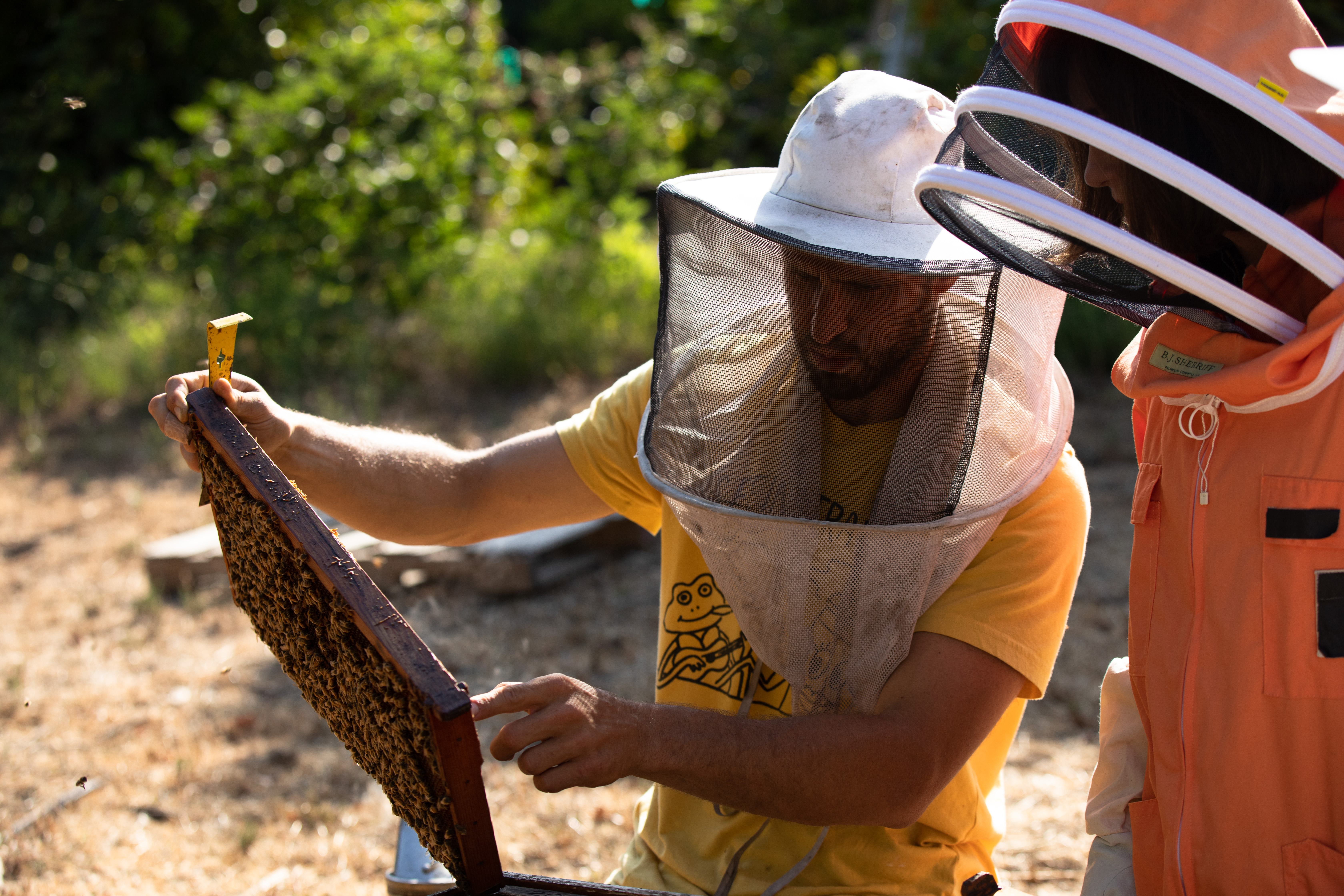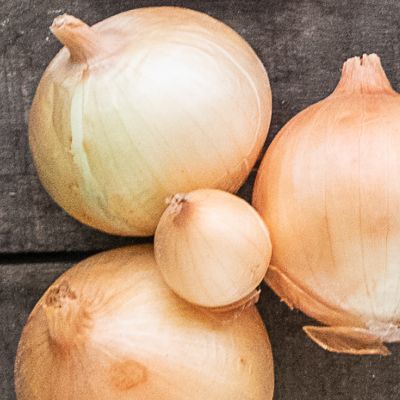Honey is one of the most revered foods throughout history, and its makers are in danger. Here's what we can do to help.
We launch the second season of Your Food’s Roots with Zooey Deschanel by talking about honey and where it comes from—bees! It’s estimated that the average American consumes about 1.6 pounds of honey a year, so we benefit greatly from their work.
Aside from making honey, bees play a pivotal role in our food ecosystem; the food we enjoy (e.g. avocados, chocolate, coffee, berries) relies on their work as pollinators. With several factors at play, such as climate change and reliance on pesticides in farming practices, the bee population has decreased dramatically. According to the USDA, beekeepers have reported losing over 40% of honey bee colonies in 2015.
What role do bees play in the ecosystem?
Bees are pollinators, and pollen in flowers serve as a source of protein, fat, minerals, and vitamins for their diet. They both eat and store the pollen they gather from flowers and bring it back to their hive. Meanwhile, their bodies are covered in pollen as they fly from flower to flower, so they help transfer it to where it’s needed so plants can grow fruits. Others animals pollinate as well, including the monarch butterfly, hummingbirds, and bats, but bees take the gold medal.
Certain crops rely heavily on the work of pollinators, such as almonds, which is a $7.6 billion dollar industry in the state of California alone. In fact, over one-third of the foods we enjoy would not exist without the services of bees.
Why are bee colonies declining in growth?
In 2005, bee colonies across North America and Europe suffered from colony-collapse disorder (CCD), in which worker bees abandoned their hives in droves. From 2007 - 2013, an estimated 10 million beehives were lost to colony-collapse disorder, which is caused by several factors including parasites and agricultural chemicals, according to The Guardian. Other notable factors include climate change, malnutrition, and a loss of natural resources. Overall, in the past two decades, pollinator populations have decreased by 90%!
What's being done to fix this issue?
There is good news for bees—commercial bee colonies are slowly starting to recover. Part of this growth can be attributed to government intervention—in 2014, the US government acknowledged the important role pollinators play in the food system (they add over $15 billion in value to agricultural crops each year), and launched the Pollinator Health Task Force, with representatives from various departments including the Environmental Protection Agency, Department of Education, and the National Science Foundation. This task force created a holistic action plan investigating the cause(s) of colony-collapse disorder and a strategy to revive bee colonies throughout the US.

How can I help?
Helping bees may seem daunting, but each of us can make a difference! Here’s how:
1. Find out where your honey comes from
Do you know what’s in your honey and where it comes from? Check the label to find out and see if it has been diluted with sweeteners such as corn syrup. Look for locally-sourced, raw, and unfiltered honey as is contains many nutrients and antioxidants that your body benefits from! If you have a local beekeeper, purchasing honey directly from them is also a great way to support their craft. The Guardian puts it best:
Lastly, if your honey has a True Source Certified logo on the package, that means the maker has been audited through a third-party certification process to ensure the honey you purchase is ethically sourced.
2. Save bee hives
When you see, or hear, a swarm of bees and spot a hive, your first instinct might be to exterminate it. But now that you know bees are in danger, let your local beekeeper association take care of the hive and rescue the colony. Here’s a list of beekeeping associations by state that you can contact to remove the hive safely.
3. Stop spraying harmful pesticides
There are certain chemicals and sprays that are harmful to bees, especially pesticides. When there isn’t a healthy bee population, our favorite plants/crops suffer. Here are some tips if you have to spray:
- Consider a bee-friendly option.
- Avoid spraying while flowers are in bloom; it’s best to spray after the petals have dropped as they won’t attract as many bees.
- Read the label to avoid neonicotinoid insecticides (e.g. clothianidin, dinotefuran, imidacloprid, and thiamethoxam) especially when flowers are in bloom.
Now that you know some of our favorite foods depend on the work of bees, let’s each do our part to help them. Purchase foods from farmers that have sustainable farming practices, which protect bees because they don’t use harmful chemicals. Find out who your local beekeepers are, and support them by purchasing raw, unfiltered honey or donate to their efforts! #knowitorgrowit
Read Next


